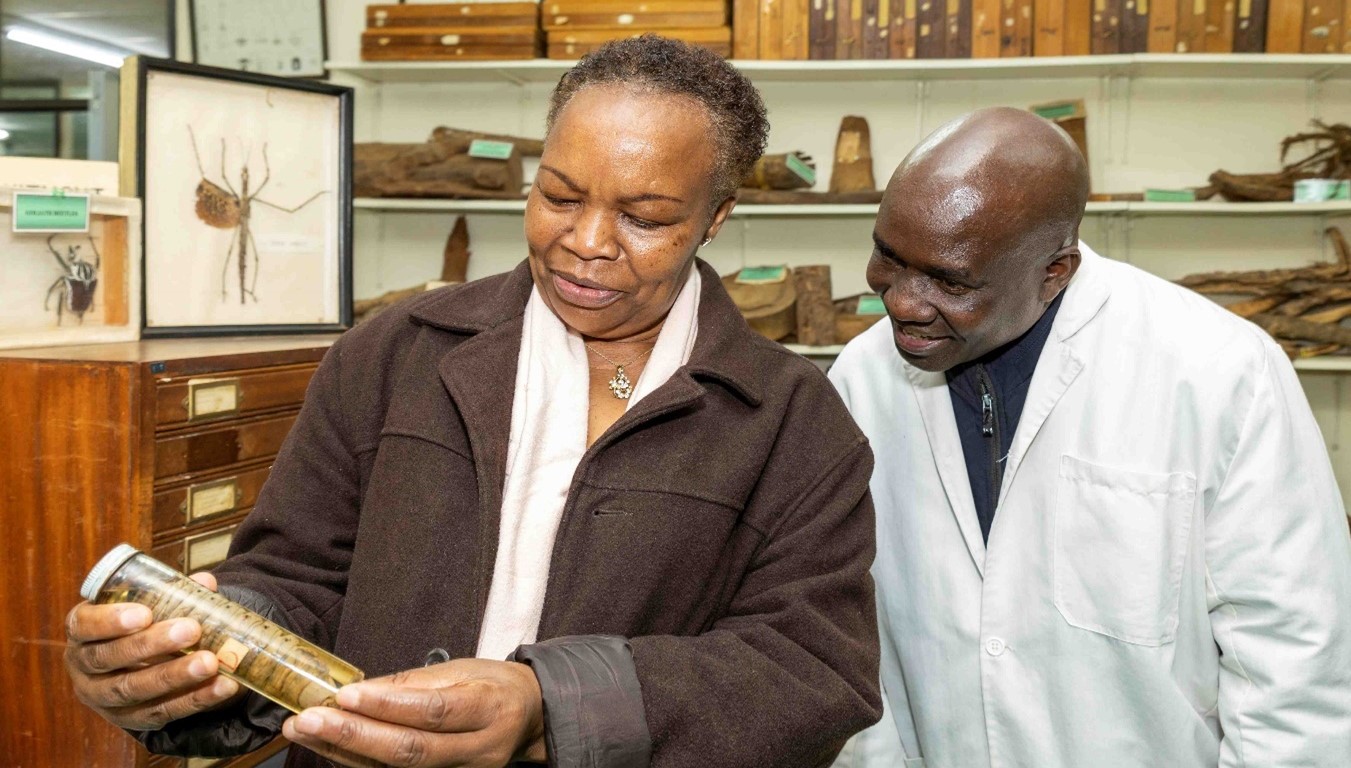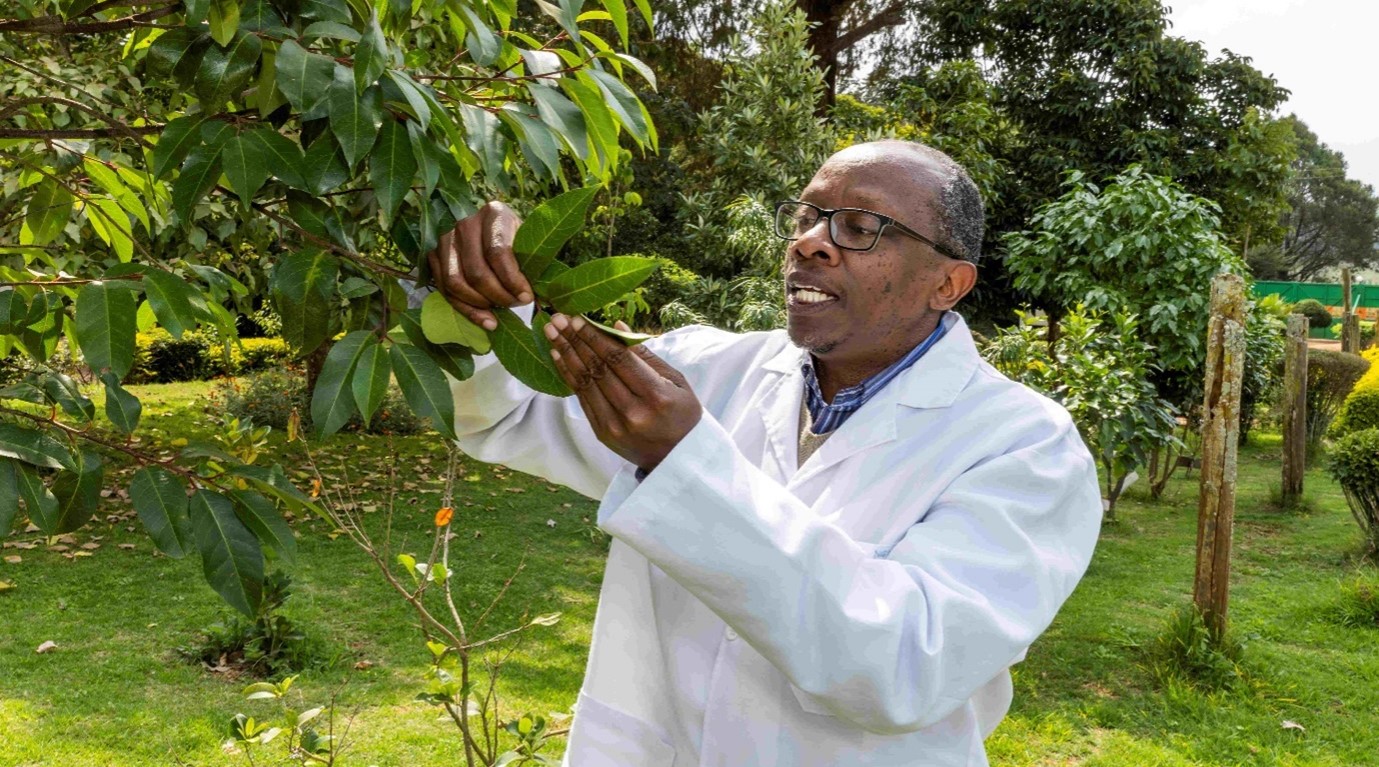African Forest Forum is a vital and active institution, sponsoring and facilitating research to tackle the many threats to the continent’s forests and trees. They have supported Kenya in strengthening respected institutions that have helped fight challenges to its own forests, and those across the continent.
One is the Kenya Forestry Research Institute, or KEFRI. The organisation’s research covers a wide array of subjects, from Forest Productivity and Improvement to Ecosystems and Environment Management, Socio-Economics to Policy-Making. They also boast an amazing collection of insects, both helpful and harmful, topping over 10,000.
Thanks to capacity building support from AFF, KEFRI has been able to strengthen their knowledge and capacity to improve their performance to achieve impressive impact, that includes producing and distributing high quality tree seeds; developing technologies for the propagation and management of indigenous tree species; developed technologies to improve tree germ plasm production; and developed allometric equations for estimating carbon stocks on farmland. The list doesn’t end there!
Support from African Forest Forum has also helped Kenya achieve a leadership role in another important area when it comes to trees, as well as agriculture. Kenya is a focal point for efforts to understand and counteract the effects of disease and pests on forests and farms.
Dr. Mercy Gichora has been a research scientist at the Kenya Forestry Research Institute for almost two decades. Mercy grew up in rural Kenya, where she developed an affinity for beetles and caterpillars, that kind of became her toys. She eventually went on to study insects and take a prominent role in such research in Kenya and across the continent.

Mercy early on learned the value of sharing information across borders, one of African Forest Forum’s greatest achievements. “I will start by mentioning that ecosystems are natural, they can maintain balance. There are some insects in the ecosystems that are enemies, we call them natural enemies of other insects. So, some insects can feed on the trees, and some insects feed on the insects that feed on the trees. And these relationships are very, very important to understand. So, when we look at the situation in Kenya, our big problems come when we have exotic trees, because on some occasions, there are insects that catch up from the home, the origin of the trees that we have introduced here. And then there is nothing to keep those in check, because it's not natural, it's not in its natural ecosystem,” she explains.
In cases like this, she works on identifying a natural enemy to the pests that have invaded new territory. It is preferential to find a biological solution rather than resorting to pesticides. While chemicals sometimes offer a good short- term solution, they wipe out both good and bad insects, and can have a deleterious effect on an ecosystem, especially if used too frequently.
Besides finding good insects to save trees from bad insects, they can also be bred to become resistant to some pests, as Mercy relates, “You're talking about trees that are in the rotation for 30 years, for 40 years. So, if you can get something done in 10 years, it's still possible to save a crop because you're looking at the long-term. And one of the long-term methods of managing insect problems is to breed for resistance. “Trees are living organisms, and they have their own mechanisms for survival. And one of them actually is to resist these insects. So over time, you find that because of their genetic makeup, there are certain trees of the same type that get attacked, but they don't succumb to this problem,” says Mercy.
Mercy has introduced many of her colleagues to the work of African Forest Forum. This included George Ngundo, who is an inspector and a scientist with Kenya’s Plant Health Inspectorate Service (KEPHIS). He manages the organisation’s labs, from the Nairobi facility, one of 23 in the country. His lab is the national plant quarantine station, the one and only plant quarantine station in Kenya. It meets both national and international standards under the International Plant Protection Convention (IPPC).
The prestige of his operation was demonstrated when a rare virus started affecting maize seeds on the continent. “The station we're working from now, the plant quarantine and biosecurity station, is the COMESA reference lab for plant health. And as you know, COMESA combined 21 countries in Eastern and Southern Africa. So, we are the reference lab when it comes to plant health. So, as soon as that disease was discovered in Kenya, we quickly developed and validated detection methods that we shared among all our neighbouring countries. We also offered our facility and our testing capability for their seed, and we were able to test seed that is outbound from Kenya into their countries, were able to certify it free of the two viruses causing amazingly thin necrosis disease,” according to George.
KEFRI and African Forest Forum have worked together to build capacity, create networks, develop innovations and influence policy for the good of Kenya’s forest. Together they will continue to cooperate on research and implementation, protecting not only Kenya’s natural resources, but those of the entire African continent.


